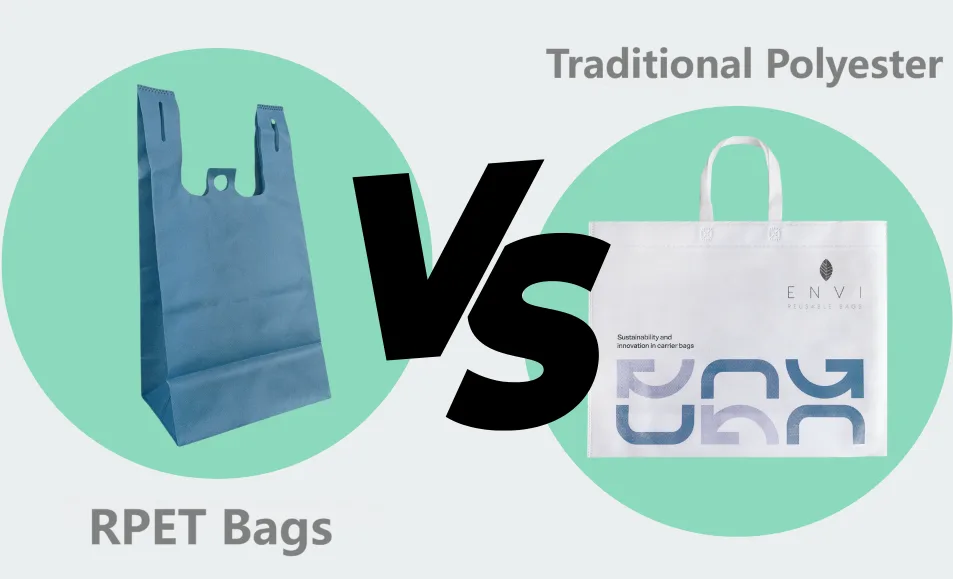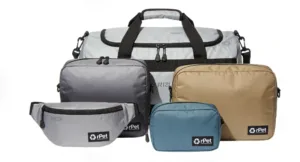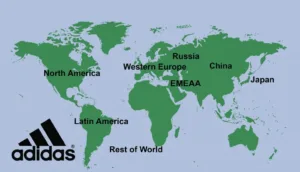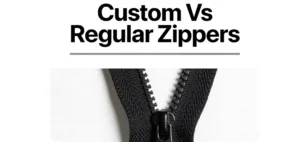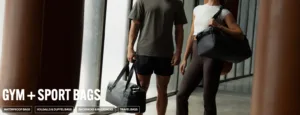Polyester is one of the most widely used synthetic materials in the bag manufacturing industry—prized for its durability, water resistance, and affordability. However, as environmental awareness grows and brands face increasing pressure to adopt sustainable practices, RPET bags vs. virgin polyester bags has become a critical comparison for forward-thinking companies.
RPET (Recycled Polyethylene Terephthalate) is produced through a recycled PET manufacturing process that transforms post-consumer waste (PCW) polyester, such as discarded plastic bottles, into usable textile fibers. This shift not only helps divert waste from landfills and oceans but also reduces the reliance on fossil fuels compared to virgin polyester production.
In this article, we’ll provide a comprehensive breakdown of RPET and virgin polyester across four key areas: sustainability, performance, cost comparison (RPET vs. virgin polyester), and branding impact. Whether you’re building a new product line or repositioning your brand with eco-conscious values, understanding these material differences is essential.
At Sunteam, we support brands in making informed material choices by offering both RPET and virgin polyester solutions tailored to your product needs.
Contents
1. Material Overview: RPET bags vs. virgin polyester bags

? What is Traditional Polyester?

Traditional polyester, also known as virgin polyester, is a synthetic fiber derived directly from petroleum. It’s one of the most common materials used in bag manufacturing due to its high strength, water resistance, and cost-effectiveness. Virgin polyester is widely used in backpacks, luggage, linings, and promotional bags, offering consistent performance and a smooth finish. However, its production relies heavily on fossil fuels and generates significant carbon emissions.
? What is RPET (Recycled Polyester)?
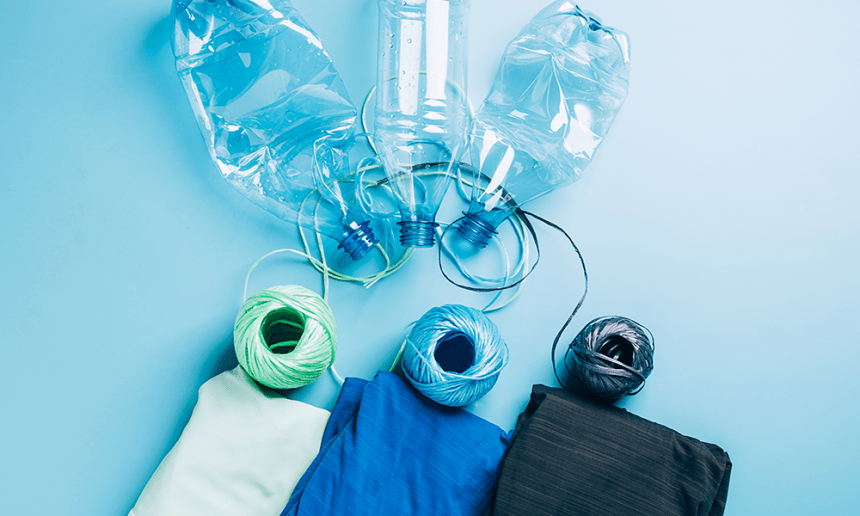
RPET stands for Recycled Polyethylene Terephthalate, a fiber made from post-consumer waste (PCW) such as plastic water bottles, food containers, and other discarded PET packaging. Unlike virgin polyester, RPET gives a second life to existing plastic waste, significantly reducing environmental impact.
The Recycled PET Manufacturing Process involves several steps:
-
Collection – Used PET plastic bottles are collected through recycling programs.
-
Sorting – Plastics are sorted by color and type to ensure material consistency.
-
Cleaning – Bottles are thoroughly washed to remove labels, adhesives, and contaminants.
-
Shredding – Clean bottles are shredded into small flakes.
-
Melting – These flakes are melted down to create a molten resin.
-
Extrusion & Spinning – The resin is then extruded into fibers or sheets, ready to be woven into fabrics.
The resulting RPET fabric has properties similar to virgin polyester—it is strong, lightweight, and water-resistant—but with a significantly lower carbon footprint and reduced dependence on virgin resources.
RPET can be used in nearly all the same applications as virgin polyester, including travel bags, backpacks, linings, and softshells. As more brands focus on circularity and sustainability, RPET has emerged as a smart material choice that supports both performance and the planet.
2. RPET vs. Virgin Polyester: Sustainability Comparison
As environmental regulations tighten and consumer awareness grows, sustainability has become a key differentiator in the materials used for bag production. Here’s how RPET compares to virgin polyester across multiple environmental dimensions:
Key Sustainability Factors
| Criteria | RPET (Recycled Polyester) | Virgin Polyester |
|---|---|---|
| Raw Material | Post-consumer plastic waste (PET bottles) | Petroleum (non-renewable resource) |
| Energy Consumption | Up to 45–60% lower than virgin polyester production | High energy consumption due to extraction and refining |
| Greenhouse Gas Emissions | Up to 32% fewer CO₂ emissions per kilogram of fiber produced | Higher CO₂ emissions |
| Water Usage | Significantly reduced water usage in processing | Higher water demand during production |
| Waste Reduction | Diverts plastic waste from landfills and oceans | No contribution to waste reduction |
| Recyclability | Recyclable (though quality degrades after multiple cycles) | Recyclable but usually discarded |
| Certifications Available | GRS (Global Recycled Standard), OEKO-TEX, etc. | Typically lacks eco-certifications |
Visual Summary: RPET vs. Virgin Polyester
Bar Graph: CO₂ Emissions per kg of Fabric
| Material | CO₂ Emissions (kg) |
|---|---|
| Virgin Polyester | 9.52 |
| RPET | 6.48 |

This chart clearly compares the carbon dioxide emissions generated per kilogram of fabric produced. Virgin Polyester emits approximately 9.52 kg of CO₂ per kilogram of fabric, while RPET, made from recycled plastic bottles, significantly reduces emissions to about 6.48 kg. This demonstrates that RPET offers a clear environmental advantage by lowering the carbon footprint and supporting more sustainable fashion practices. Data source: Textile Exchange, 2021 Preferred Fiber & Materials Market Report.
3. Performance & Quality for RPET vs. Traditional Polyester

In today’s era of green innovation and the circular economy, post-consumer waste (PCW) polyester undergoes an advanced recycled PET manufacturing process that breathes new life into discarded plastics. Much like turning yesterday’s waste into tomorrow’s treasure, RPET significantly contributes to carbon footprint reduction in bags, aligning perfectly with global corporate ESG goals and sustainable procurement bag initiatives. With certifications such as GRS (Global Recycled Standard) and Oeko-Tex, and full traceability in recycled materials, RPET offers brands ethical sourcing for polyester that not only supports the environment but also strengthens their supply chain credibility.
When it comes to durability and tensile strength, RPET is like a resilient warrior on the sustainability battlefield — tough and reliable. Its abrasion resistance rivals that of traditional polyester, making it well-suited for everyday commercial bag applications. While the color consistency and appearance uniformity of RPET may slightly lag behind virgin polyester, modern processing techniques allow for adjustable softness and hand feel, as well as equally smooth sewing and embossing operations. Additionally, RPET presents a compelling cost comparison: RPET vs. virgin polyester, making it an ideal choice for businesses seeking to balance sustainability with economic efficiency.
Globally, regulations such as California’s SB 270, China’s plastic restriction policies, and the EU plastic tax are driving the packaging industry towards greener practices. Choosing RPET ensures compliance with Extended Producer Responsibility (EPR) laws and helps businesses avoid greenwashing in B2B marketing. We offer custom printing options on RPET bags—whether CMYK or Pantone—providing precise color reproduction tailored to your brand. Our supply chain adheres strictly to REACH compliance, while flexible OEM production enables optimized minimum order quantities (MOQ) and lead times. This comprehensive approach empowers clients to achieve the perfect harmony between environmental responsibility and commercial success.
4. Cost Consideration

After understanding the performance of the material, what most suppliers and bag manufacturers want to know next is the cost comparison between RPET and virgin polyester.
The production cost of RPET (recycled polyester) bags is slightly higher than that of traditional virgin polyester bags, mainly due to the more complex recycling process of the raw material and the requirement for GRS (Global Recycled Standard) certification.
First, collecting, sorting, and thoroughly cleaning post-consumer plastic waste demands significant effort to ensure material purity and consistent quality with traceability in recycled bags. Additionally, RPET fabrics often require third-party certifications such as GRS, which adds to the overall cost and production timeline. The manufacturing process itself involves more precise technology and equipment compared to virgin polyester, contributing further to cost increases.

However, the cost comparison for RPET bags versus virgin polyester bags should also consider the strength and tensile strength of RPET bags, which can meet or exceed traditional polyester, adding value to the final product. With consumers increasingly prioritizing sustainability and environmental responsibility, products made from recycled materials enjoy stronger market recognition. Brands can leverage eco-friendly labels, green packaging, and targeted marketing to communicate their commitment to a greener future, which enhances consumer loyalty and improves brand image. In many markets, especially in Europe and parts of Asia, eco-conscious purchasing decisions are becoming a key factor, making RPET bags a strategic material choice.
At Sunteam, our internal production data shows that RPET fabric costs approximately 10-15% more than virgin polyester. Despite this cost premium, some clients have reported a roughly 20% increase in product value by highlighting the recycled content and eco-friendly attributes in their marketing. This value uplift helps brands differentiate their products and build customer trust. Furthermore, for large-volume orders, supply chain optimization and economies of scale can narrow the cost gap, making RPET bags more competitive.
In summary, while the initial cost of RPET is higher, the combined benefits of enhanced brand reputation, alignment with sustainability trends, and potential long-term cost savings make it a worthwhile investment for forward-thinking brands.
5. RPET Bag Brand Image & Market Trends

Consumers, especially in mature markets like Europe, the US, and Japan, are placing increasing value on sustainability and environmental responsibility. Using RPET (Recycled PET) not only aligns with these values but also enhances a brand’s credibility in the eco-conscious market. By utilizing post-consumer waste (PCW) polyester, brands give a second life to discarded plastic bottles and integrate circular economy principles into their product offerings.
The recycled PET manufacturing process—which involves collection, cleaning, shredding, melting, and spinning—significantly reduces energy consumption and environmental pollution. This process plays a crucial role in carbon footprint reduction in bags, making it a compelling choice for sustainable product development. Brands adopting RPET can also earn labels and certifications such as “eco-friendly packaging,” “reduced carbon footprint,” and “green supply chain,” strengthening their market positioning.
Leading retail brands like Patagonia, Herschel, and Adidas have widely incorporated RPET materials into their products and packaging to support their ESG goals, while offering attractive sustainable packaging solutions for today’s environmentally aware consumers.
Because nothing says “fashion-forward” like saving the planet one plastic bottle at a time.
Conclusion
While RPET and traditional polyester offer similar performance in terms of strength, durability, and versatility, their environmental impact and brand value tell a different story. RPET bag is a more sustainable option, made from post-consumer waste, supporting circularity and reducing plastic pollution. On the other hand, virgin polyester remains a cost-effective choice, especially for price-sensitive markets or high-volume production.
As environmental regulations tighten and consumer demand for eco-friendly products grows—particularly in markets like Europe, North America, and Japan—RPET is rapidly becoming the new standard for responsible brands. It allows companies to align with sustainability goals, improve ESG scores, and enhance brand perception without sacrificing quality.
Ultimately, the right choice between RPET and virgin polyester depends on your bag brand’s positioning, target audience, and long-term sustainability objectives. Whether you’re launching a new eco-conscious line or looking to gradually transition your materials, thoughtful selection is key.
Interested in custom RPET bag manufacturing?
At Sunteam, we specialize in helping brands make the right material choices. We offer OEM and ODM services with full support on RPET sourcing, design, and production. Contact us today to explore how RPET can add real value to your bag collection.Further Reading: What Is Ballistic Nylon Backpack?
What Is Vegetable Tanned Leather Bag? How Is It Made?

